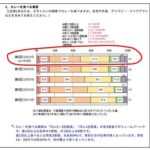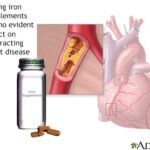Salmonella food poisoning is a common yet unpleasant experience. If you suspect you have Salmonella, understanding how to treat it is crucial for a swift recovery. This article delves into the symptoms, treatment options, and preventative measures for Salmonella food poisoning, empowering you with the knowledge to manage and avoid this bacterial infection.
Diagnosing Salmonella Infection
A definitive diagnosis of Salmonella infection requires a laboratory test. This involves detecting Salmonella bacteria in samples such as stool, body tissue, or fluids. If you suspect you have Salmonella, consult a healthcare professional for proper testing and diagnosis.
Treating Salmonella Food Poisoning
The cornerstone of treating Salmonella food poisoning involves supportive care to manage symptoms and prevent complications.
Hydration is Key
Dehydration is a significant concern with Salmonella due to diarrhea and vomiting. Replenishing lost fluids is essential.
- Drink plenty of clear fluids: Water, broth, and electrolyte solutions help restore fluid balance.
- Oral rehydration solutions (ORS): These are particularly beneficial for children and the elderly, providing a balanced mix of electrolytes and fluids.
When Antibiotics Are Necessary
In most cases, Salmonella infections resolve on their own within a week without antibiotics. However, specific groups may require antibiotic treatment:
- Severe illness: Individuals experiencing high fever, bloody stools, or signs of systemic infection.
- Weakened immune system: People with HIV, undergoing chemotherapy, or with other conditions compromising their immunity.
- Adults over 50 with medical problems: Those with heart disease or other underlying conditions.
- Infants: Children younger than 12 months are more vulnerable to severe complications.
- Adults 65 and older: Older adults are at higher risk for severe illness.
Antibiotics should only be used under the guidance of a healthcare professional, as inappropriate use can contribute to antimicrobial resistance.
Managing Symptoms
Over-the-counter medications can help alleviate some symptoms:
- Anti-diarrheal medications: Loperamide (Imodium) or bismuth subsalicylate (Pepto-Bismol) can reduce diarrhea, but use with caution and follow the instructions carefully. Consult a doctor before using these medications, especially for children.
- Pain relievers: Acetaminophen (Tylenol) can help reduce fever and muscle aches.
Image alt: Microscopic view of Salmonella bacteria, illustrating diagnostic context.
Potential Long-Term Health Problems
While most people recover fully from Salmonella, some may experience lasting effects:
- Altered Bowel Habits: Some individuals may have changes in bowel frequency and consistency for several months after the infection.
- Reactive Arthritis: A subset of individuals develop joint pain, known as reactive arthritis, which can persist for months or years. This condition may also involve eye irritation and painful urination.
How Salmonella Spreads
Understanding how Salmonella spreads is crucial for prevention. Common sources include:
- Contaminated Food: Eating raw or undercooked poultry, eggs, meat, or unpasteurized milk.
- Contaminated Water: Drinking water that has been contaminated with Salmonella.
- Contact with Animals: Handling infected animals, their feces, or their environment.
- Cross-Contamination: Spreading bacteria from contaminated surfaces to food.
Who is at Higher Risk?
Certain groups are more susceptible to Salmonella infection and severe illness:
- Children under 5: Young children are more likely to contract the infection.
- Infants not breastfed: Breastfeeding provides protective antibodies.
- Older adults: Individuals aged 65 and older are more vulnerable to severe complications.
- People with weakened immune systems: Conditions like HIV or treatments like chemotherapy increase risk.
- People taking stomach acid reducers: These medications can reduce the stomach’s ability to kill bacteria.
Antimicrobial Resistance and Salmonella
Antimicrobial resistance is an increasing concern with Salmonella. Overuse of antibiotics contributes to bacteria developing resistance, limiting treatment options for severe infections. Responsible antibiotic use in both humans and animals is crucial to slowing the spread of resistant bacteria.
Image alt: Person thoroughly washing hands with soap and water, depicting a key preventative measure against Salmonella.
Preventing Salmonella Infection
Preventing Salmonella involves practicing good hygiene and food safety:
- Wash hands thoroughly: Wash hands with soap and water for at least 20 seconds, especially after handling raw meat or poultry, using the restroom, or touching animals.
- Cook food thoroughly: Use a food thermometer to ensure meat, poultry, and eggs reach safe internal temperatures.
- Avoid raw or undercooked foods: Especially poultry, eggs, and seafood.
- Prevent cross-contamination: Keep raw meat, poultry, and seafood separate from other foods. Use separate cutting boards and utensils.
- Refrigerate promptly: Refrigerate perishable foods within two hours.
- Wash produce: Rinse fruits and vegetables thoroughly under running water.
- Safe food handling: Follow guidelines for safe food preparation and storage.
Salmonella Infection Statistics
The Centers for Disease Control and Prevention (CDC) estimates that Salmonella causes approximately 1.35 million illnesses, 26,500 hospitalizations, and 420 deaths in the United States each year. These numbers highlight the significant public health burden of Salmonella infections.
Conclusion
Salmonella food poisoning is a common illness that can be effectively managed with proper care. Staying hydrated, managing symptoms, and practicing good hygiene are key to recovery and prevention. While most cases resolve on their own, certain individuals require antibiotic treatment. By understanding the risks, symptoms, and preventative measures, you can protect yourself and your community from Salmonella infections. If you suspect you have Salmonella or are experiencing severe symptoms, seek medical advice promptly.

